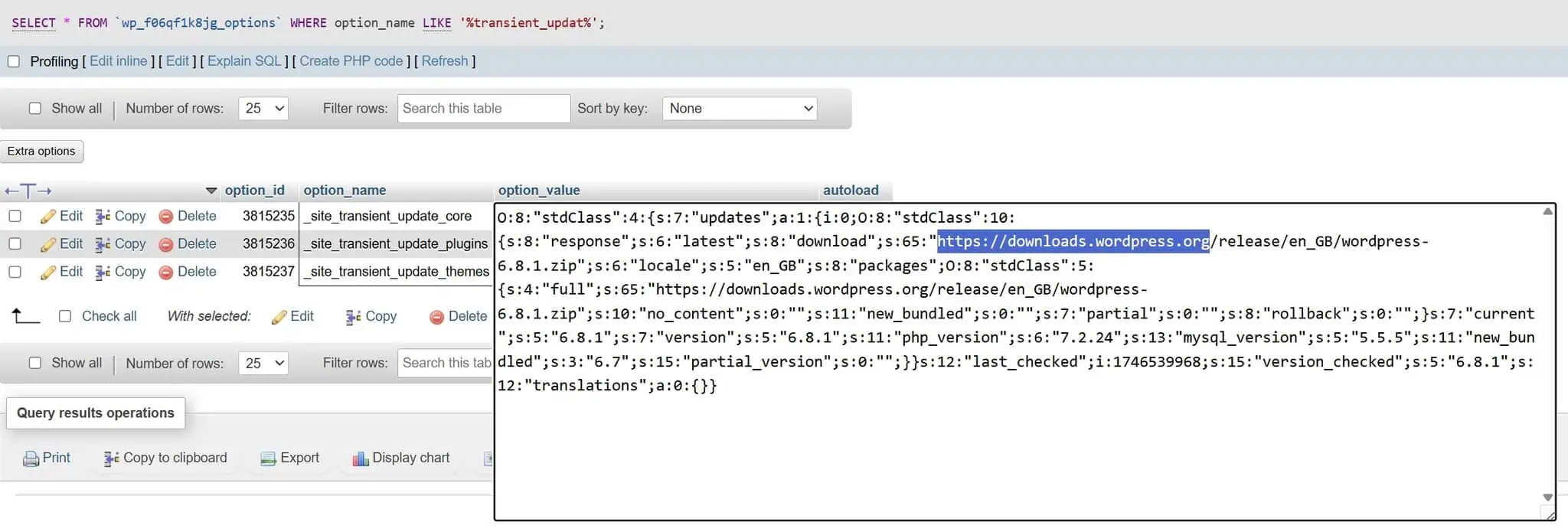In this article:
Have you been told that SiteGround is one of the best hosting providers out there but you’re not so sure? Are you looking for honest, unbiased SiteGround reviews? As WordPress experts who have tested a wide range of hosting companies we can confidently say that SiteGround isn’t what it used to be. Honestly, if you asked us today, we would have a hard time recommending it.
What was SiteGround like in the past?
Years ago, SiteGround used to be a really good option. They offered better performance than most competitors and genuinely seemed to care about their customers and their websites. They were one of the few hosting companies that truly understood WordPress: they prioritized it, promoted it on their website, and it really showed.
- Renewal prices for their plans were not outrageously high. In fact, they were quite competitive. SiteGround is and has always been known for offering a heavily discounted first year, with subsequent renewals at the “regular” price. Back in October 2017, the first year of their cheapest hosting plan (“StartUp”) cost €3.95 + VAT per month, while renewal cost €9.95 + VAT per month.
- Their support was incredible. You could start a live chat in just three simple steps; check out this video from minute 2:34 to 4:18, where you can see when a support team member joins the chat:
- They gave you cPanel, which meant you had access to tons of features and great flexibility.
- You also got Cloudflare as a CDN integration. There was nothing complicated about it; you just had to decide whether or not you wanted to use Cloudflare and activate it.
- As for performance, as we mentioned earlier, SiteGround was a breath of fresh air. At that time, the hosting market wasn’t very focused on performance; most providers simply offered a place to store your website files, and that was it. SiteGround took advantage of that gap and attracted a lot of customers.
And now, how has SiteGround changed?
Pricing
For starters, their tactic of offering the first year at a discounted rate and the following years at the regular price is even more pronounced today. Let’s look at the situation in 2017 for their cheapest plan, the “StartUp” one:
- First year: $3.95 + VAT per month
- Renewal: $9.95 + VAT per month (152% more expensive)
Today, the same plan costs:
- First year: $2.99 + VAT per month
- Renewal: $17.99 + VAT per month (502% more expensive)
In other words, the real price (the renewal) is 81% more expensive today than in 2017. We also see that the promotional price for the first year is cheaper than before, but the renewal is much more expensive.
And that’s just the price of their cheapest plan, the “StartUp” one. Let’s now compare the real prices (renewal prices, not the first year’s price) of the “GrowBig” and “GoGeek” plans:
- GrowBig renewal price in 2017: $14.95 + VAT per month
- GrowBig renewal price today: $29.99 + VAT per month
- GoGeek renewal price in 2017: $29.95 + VAT per month
- GoGeek renewal price today: $44.99 + VAT per month
The “GrowBig” plan is now twice as expensive as it was in 2017, and the “GoGeek” plan is 50% more expensive than it was in 2017. Yes, there has been significant inflation, but not to this extent. To put it in perspective, this trend is somewhat similar to what Netflix did over the same period, though at a different pace.
Not only that, the prices listed on their website are always for 12 months paid in advance. If you want to pay monthly, the prices increase even more and are only displayed at checkout, so you could end up paying, for example, $24.99 + VAT for the “StartUp” plan or $49.99 + VAT for the “GoGeek” plan.
And finally, their “Cloud Hosting” plans start at $100 + VAT, definitely too much for what they offer (see the Mediocre performance below).
Marketing tactics
Then there are the marketing and sales tactics. To be honest, many other companies do this too, but SiteGround’s tactics are increasingly resembling those of low-cost providers like Bluehost or HostGator rather than those of companies with higher prices and, technically, better performance. Let’s look at some examples.
- Their “Web Hosting”, “Hosting for WordPress” and “Hosting for WooCommerce” plans are exactly the same. They’re in three different sections, but the product features, as listed, are identical. It’s like growing only one type of tomato but selling it under different names in the same store, even though it’s the same product. This tactic aims to increase conversions by giving the illusion of more product variety.
- We’ve never seen the discount/sale banner at the top disappear. It gives the impression that the discount is temporary when it’s always there, as far as we see. This tactic is designed to force customers to buy as soon as possible.
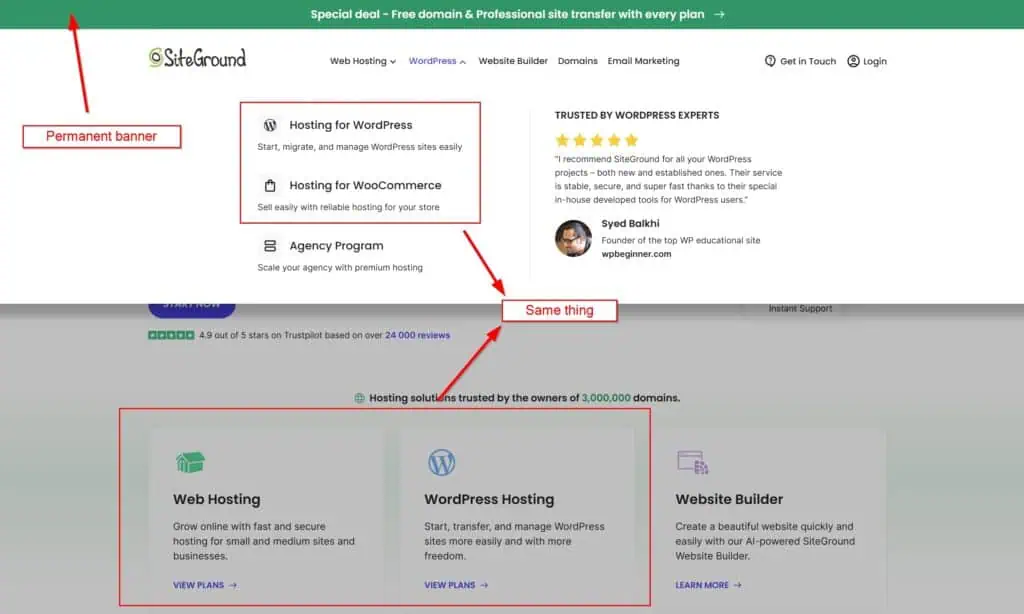
- We haven’t been able to find any promotions to try the service for a few days for free, just as many other competitors often offer. Except when we’ve tried to exit the purchase process. So we understand they only offer it if you’re about to pay and at the last minute decide to close the browser tab. Here’s the proof.
- Update: They no longer offer the free trial period when you try to close the browser tab. If you try to reproduce the same thing as the video above, they don’t offer anything interesting. Just a pop-up window pressuring you to “lock the price”.

- When you’re creating a new WordPress site, right before finishing the process they offer you a “Site Scanner” to protect your site for $4.99 per month + VAT. This so-called “protection” offers nothing more than what Wordfence or almost any other free security plugin already offers (which we don’t recommend using anyway). Moreover, nowhere on this screen are you clearly informed of the actual cost ($4.99/month)…
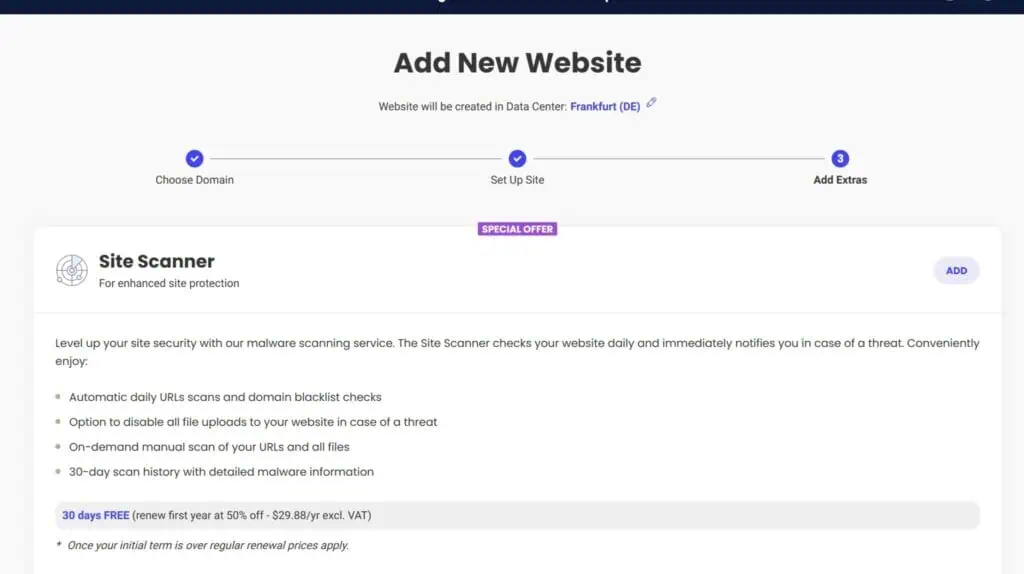
- Another add-on offered on the payment screen is “premium” backups. Again, this is completely unnecessary, given the big amount of free WordPress plugins that let you create and restore backups whenever you want. So what does “premium” offer? Hourly backups, on-demand backups, and the ability to download and/or restore them. Nothing that plugins like WPvivid or BackWPup don’t already offer at a lower price or even for free.

- And yet another unnecessary add-on is Email Marketing for $11.99/month + VAT. As a rule of thumb, it’s never a good idea to subscribe to a product in a field the company doesn’t actually specialize in. For example, an image compressor created by Elementor (a page builder) is merely a small designed to keep users within their ecosystem. Performance and functionality are secondary. The same goes for SiteGround; their Email Marketing add-on is simply a tactic to retain users. You’re much better off using a dedicated platform like Brevo, which lets you send up to 300 emails per day for free, or manage 500 contacts and send 5,000 emails for just $9 on a far superior platform.

Support
Willingness
The support agents’ attitude is a mixed bag. On the one hand, they’re very friendly, and the first interaction with them is always positive. They seem very willing to help (and they are).
On the other hand, it’s clear they’re instructed to end the conversation as quickly as possible; as soon as your question or problem is resolved, or even just answered, they’ll immediately ask the usual “Is there anything else I can help you with?” We almost always kind of feel pressured to end the conversation.
Make it seem as if there’s good support
We see this especially in plugins from large companies, which follow the mantra of quantity over quality. Check out the reviews for their SiteGround Optimizer plugin. They almost always reply to those with 4 stars or less, while they leave 5-star reviews unanswered. Why? Because from a business perspective, they have to respond to dissatisfied users, even if it’s just to say the typical “we’re sorry you didn’t like it.” They always have to respond so that the answer is there and potential customers checking the reviews believe there’s good support.
A really good support would also respond to positive reviews, thanking users for their feedback.
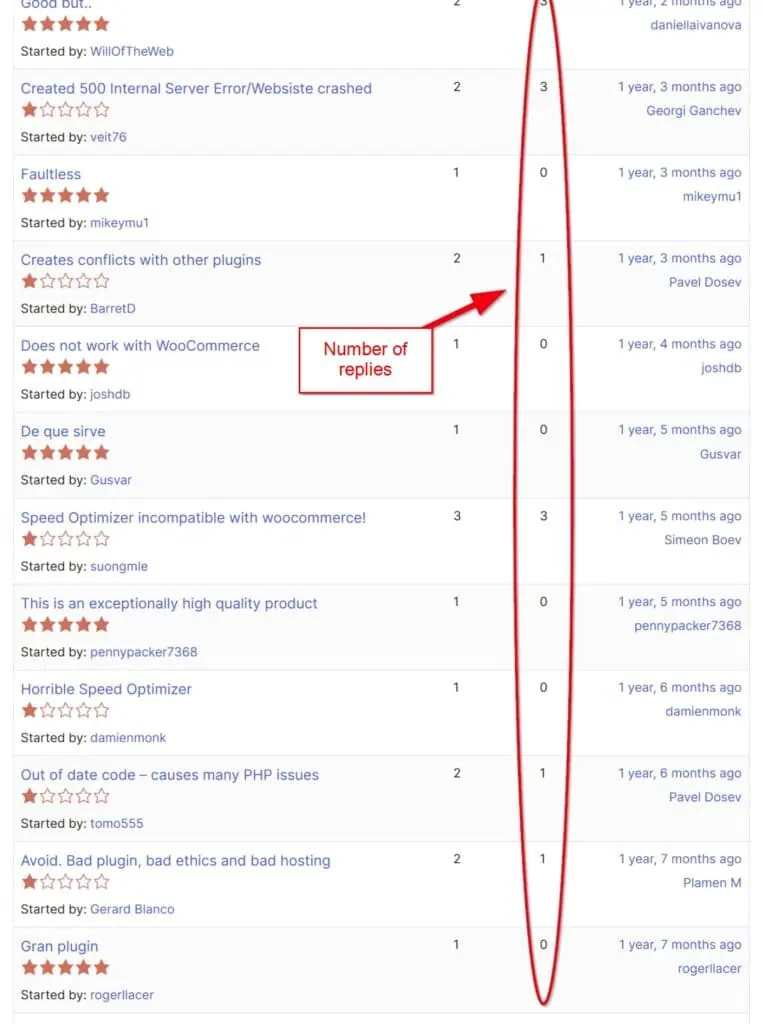
Accessibility
As we’ve seen before, years ago the support was top-notch and easily accessible at the top of the page. Now they’ve removed the live chat link from the header, making it much harder to reach a live person.
Let’s imagine our site is very slow and we want to contact the support team. First, we sign in to our account and click on the help button.
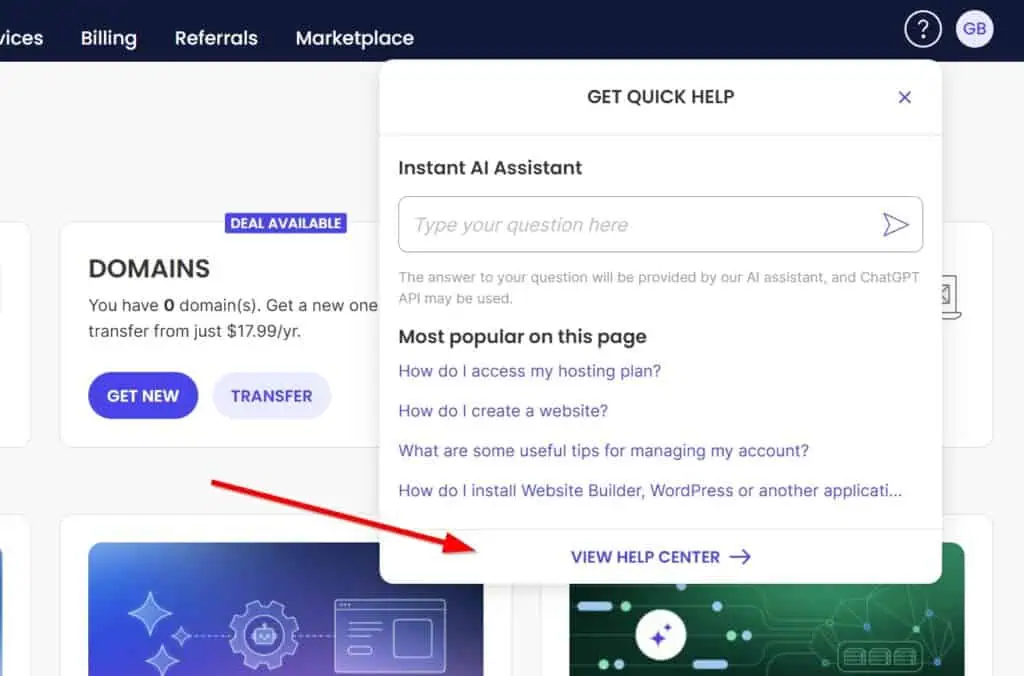
Then we arrive at the useless AI screen, where we need to click on Contact Us.
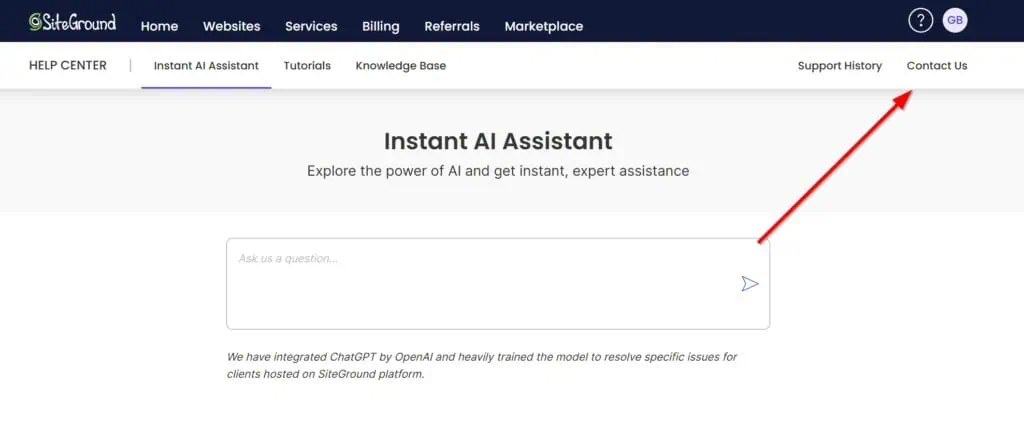
But wait, what if first we try their AI? Maybe it’s good…
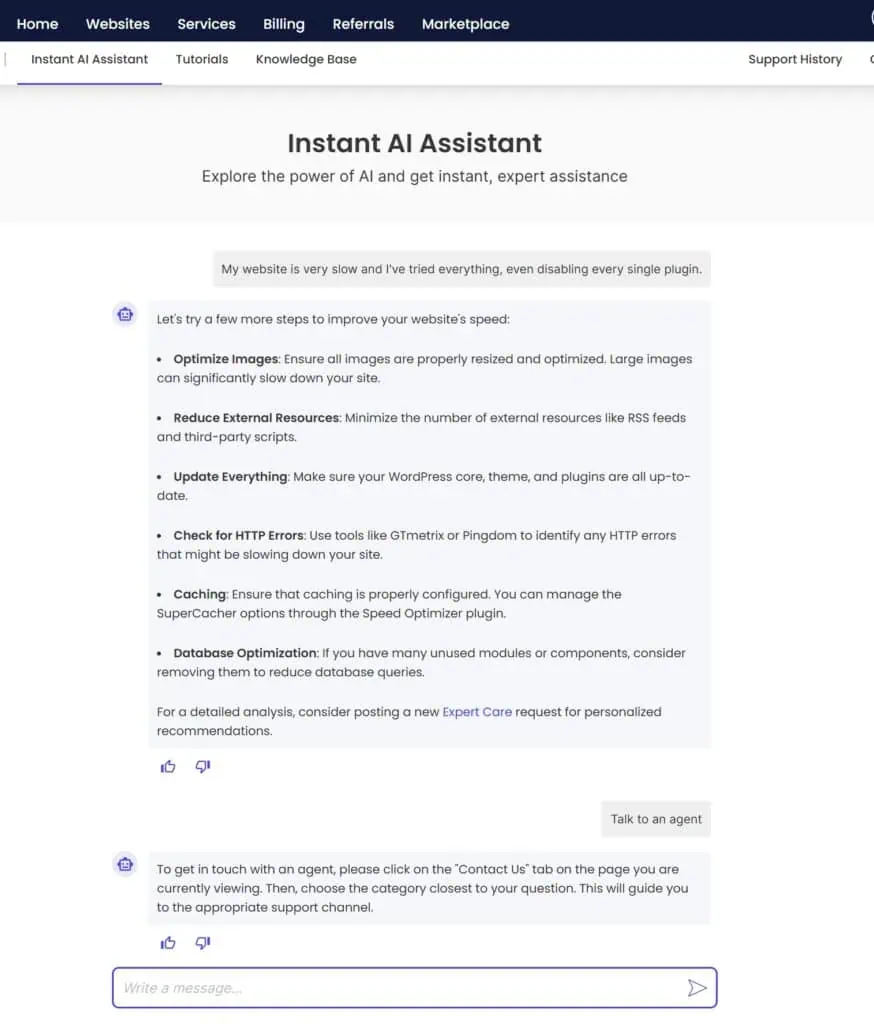
Nope. We obviously get recommended to purchase their “Expert Care,” and if we want to talk to a person, we still need to click on Contact Us. On the next screen, we have to click on Website Troubleshooting.
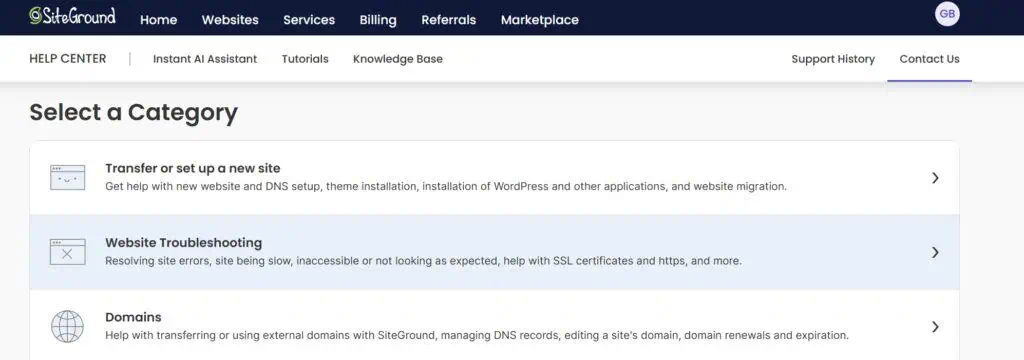
Then click on “My site is slow.”
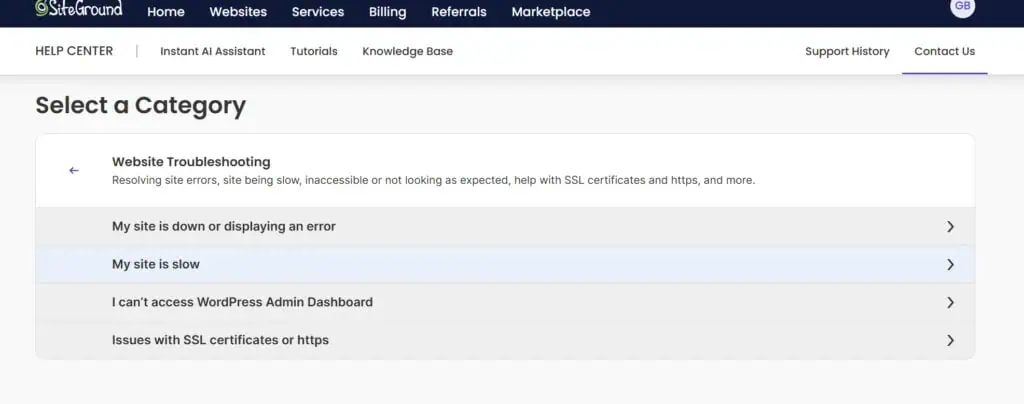
Then select the website, and select yet again that our website is slow. And then, we can finally click on This didn’t work for me.
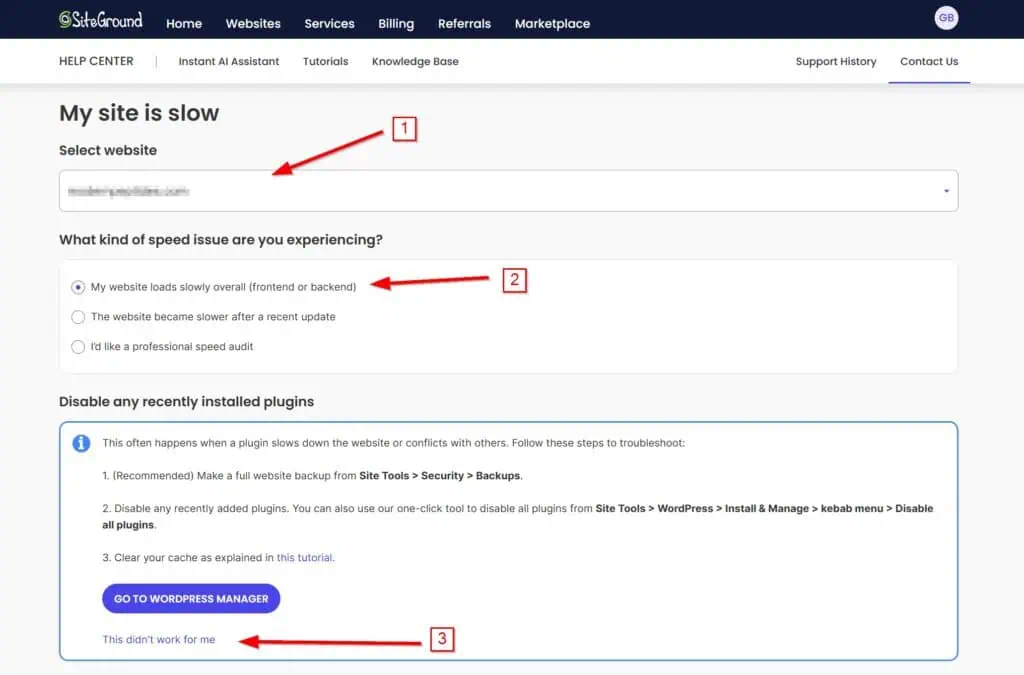
And hallelujah! We can go to the chat.

Compare this to Kinsta, an example of what good support is. Literally one click away.
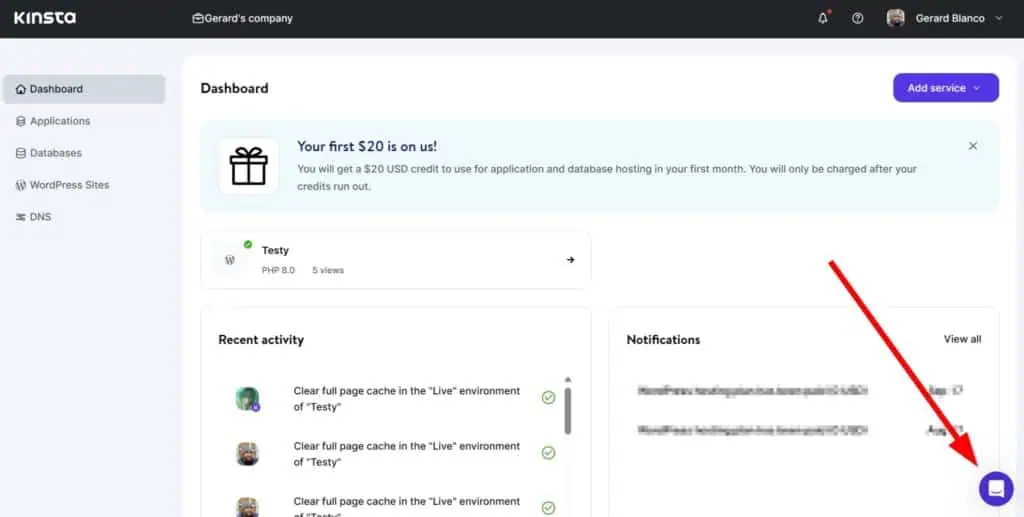
CDN
As we explained, SiteGround previously integrated with Cloudflare. In just a couple of clicks, you could have your website protected by Cloudflare, and all your static resources (CSS, JS, etc.) would be served from one of the best CDNs. And all of this was free.
But in May 2022, SiteGround decided to launch its own CDN service with a free plan and a “premium” one. Let’s compare this to Cloudflare, which was the previous solution.
| SiteGround – Free plan | Cloudflare – Free plan | |
|---|---|---|
| Domains | Without subdomains | Unlimited |
| Traffic | 10 GB | Unlimited |
| Cache | Static | Static |
| “Under Attack” mode | No | Yes |
| Cache duration setting | No | Yes |
| Points of presence | Less than 100 | More than 300 |
| SiteGround – Premium plan | Cloudflare – APO | |
|---|---|---|
| Domains | Unlimited | Unlimited |
| Traffic | Unlimited | Unlimited |
| Cache | Dynamic | Dynamic |
| “Under Attack” mode | Yes | Yes |
| Cache duration setting | Yes | Yes |
| Points of presence | Less than 100 | More than 300 |
| Price | $14.99/month | $5/month |
We personally see no reason to go with SiteGround’s CDN. Not only does it offer significantly less for a higher price, but the performance and flexibility leaves much to be desired, especially compared to Cloudflare, one of the best CDNs in the world according to CDNPerf. Even on their blog post you can read some complaints:
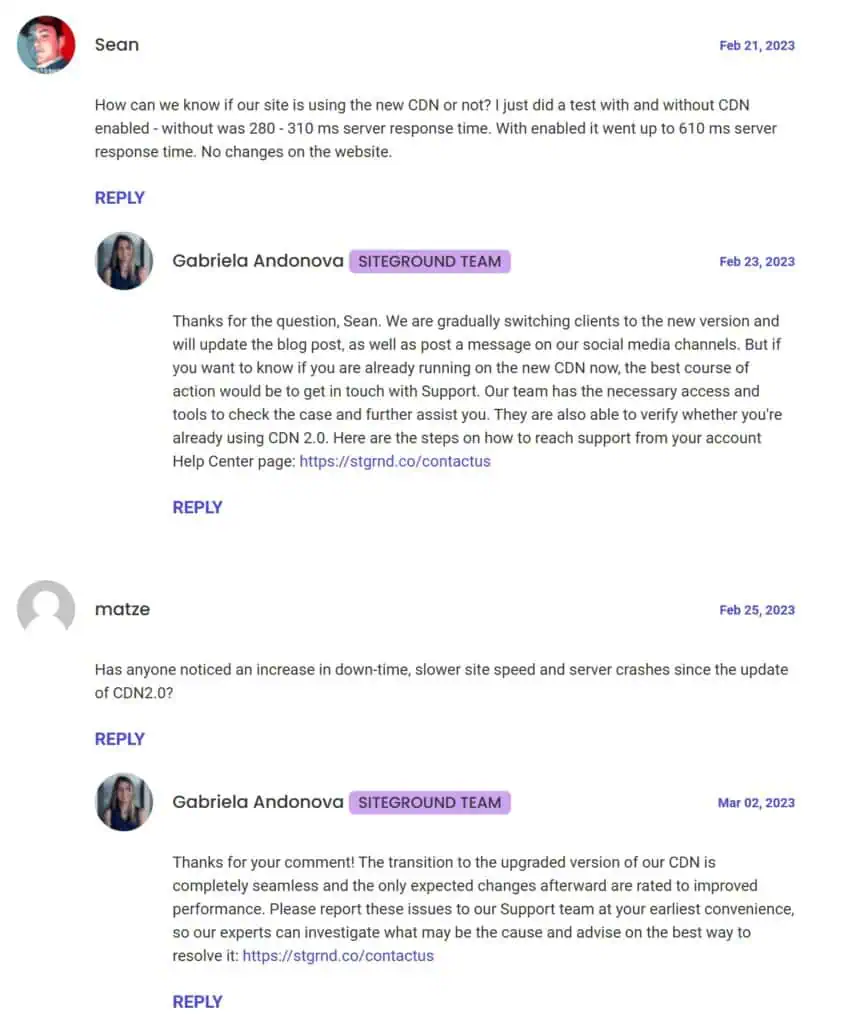
Lawsuits and controlled social networks
The SiteGround team doesn’t like reading negative reviews of their service, which is understandable. The best way to deal with such opinions is simply to ignore them; you can’t please everyone. But it seems that SiteGround also threatens legal repercussions and/or censors users on their social media networks when their opinions don’t align with their own.


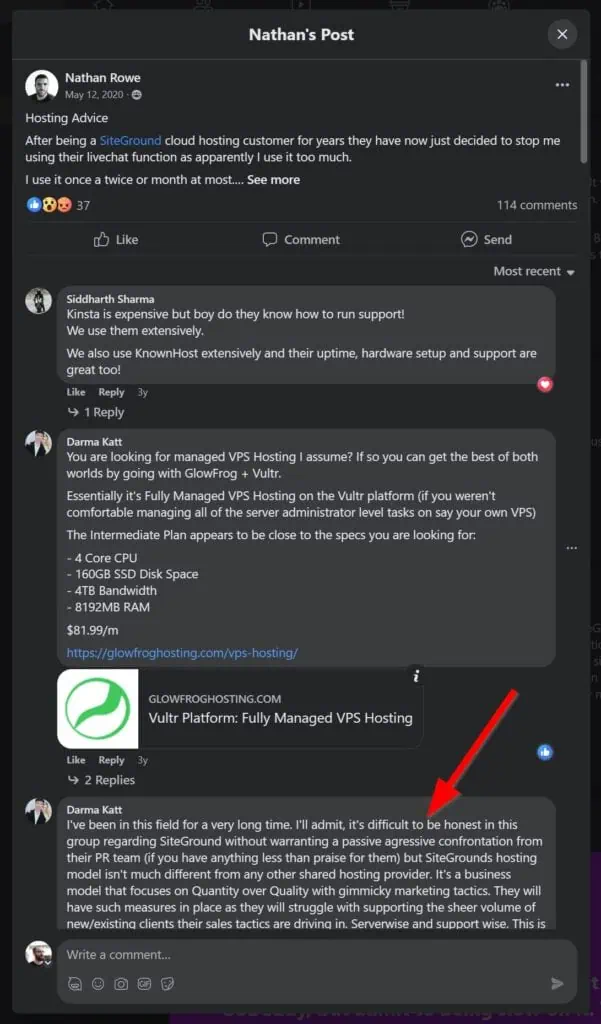
Bloatware
What is “bloatware”? It is unnecessary or unwanted software that comes pre-installed on a device, such as a computer or website. This software usually takes up space, slows the system down, consumes resources like memory and CPU, and is often useless for most users or difficult to completely uninstall.
In the case of SiteGround, when you create a WordPress website from its control panel, SiteGround automatically installs three plugins:
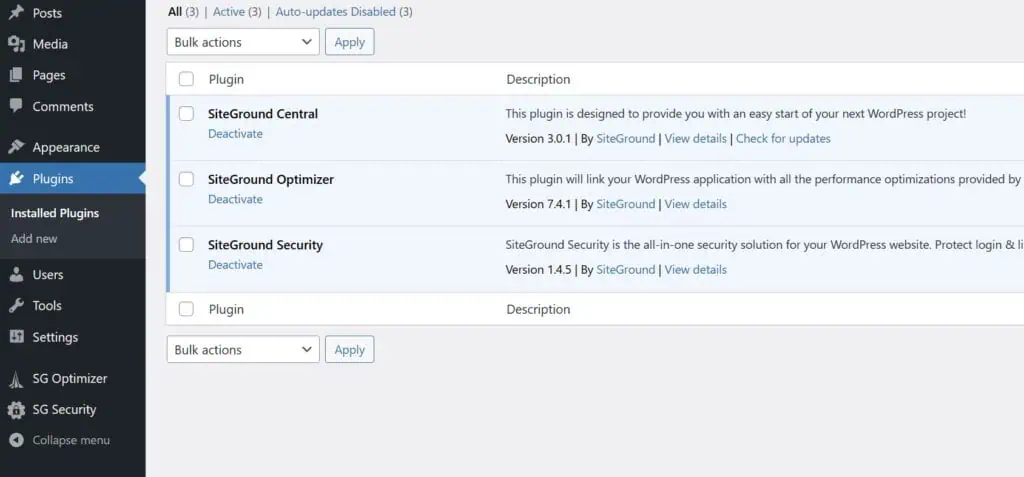
- SiteGround Optimizer: An optimization plugin with mediocre performance that can be replaced by Autoptimize and a good caching plugin.
- SiteGround Security: In our own experience, this security plugin doesn’t offer anything new compared to alternatives like Wordfence or iThemes Security. Although, as we’ve already mentioned, in our opinion, security plugins are a placebo.
- SiteGround Central: This plugin basically replaces the plugin installation, theme installation, and dashboard pages with its own versions, which are filled with affiliate links. The plugin itself does nothing else. In our opinion, there is no need to change these pages; they work perfectly fine as they are. And if modifications are necessary, at least add some genuinely useful functionality, which this plugin fails to provide.

Unnecessary and problematic code injection
Did you know that if you install a WordPress website on SiteGround, they modify your wp-config.php file without you knowing it?
By default, they call the files /var/lib/sec/wp-settings-pre.php and /var/lib/sec/wp-settings.php.

When we asked their support team what those files do, we got the typical corporate response:
Those files, loaded via the website’s wp-config.php file, are part of our WordPress management systems and tools, located in your Site Tools > WordPress dashboard.
This code is added to ensure that WordPress sites take full advantage of the tools we’ve created for them. This is part of the Managed Hosting service we offer. Please note that this type of configuration is standard practice with any Managed Hosting provider.
For security reasons, we cannot provide you with the internal configuration of our systems; therefore, we cannot share the contents of these files or any other system files with you.
In short, they don’t want to say what those files do. We understand that for security reasons they can’t show us all the content, but in any other situation, code of unknown origin is considered little more than malware and is deleted.
What we did found out are two things:
- If those two lines are commented out, nothing happens to the website.
- The second file (
/var/lib/sec/wp-settings.php), among other things, is certainly responsible for changing the URLs that WordPress calls to download updates. If we comment out the line that calls this file, we see calls to downloads.wordpress.org in the database.
But if we add the line back to the file (remove the comment), we get calls tostatic.wpupdates.siteground.net:
The worst part is that these two files cause issues (and I’m not the only one experiencing issues with SiteGround). Specifically, we’ve found that this URL change we just explained creates a problem when checking for translation updates: it’s impossible to remove the notification of new translations.
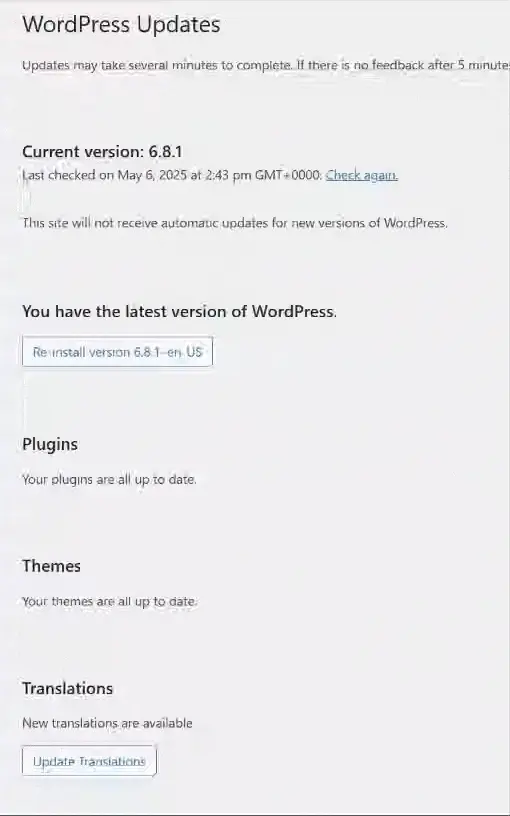
Staging sites
There are two problems (that we’ve seen) with SiteGround’s staging sites.
The first one is that while SiteGround offers a “one-click” staging feature for WordPress sites, the experience falls short if your DNS is managed elsewhere rather than with SiteGround. Specifically: the staging system uses sub-domains (e.g., staging1.yourdomain.com) which require you to add A-records (and sometimes CNAME) in your external DNS to access the staging site. Additionally, SSL certificate issues occur when the live site uses www but the staging SSL is issued only for the non-www subdomain, resulting in browser warnings.
The second problem is that when you remove the staging site, even if your DNS is managed with SiteGround, the DNS records pointing to the staging site are not deleted, so over time, this will lead to multiple unnecessary records accumulating.
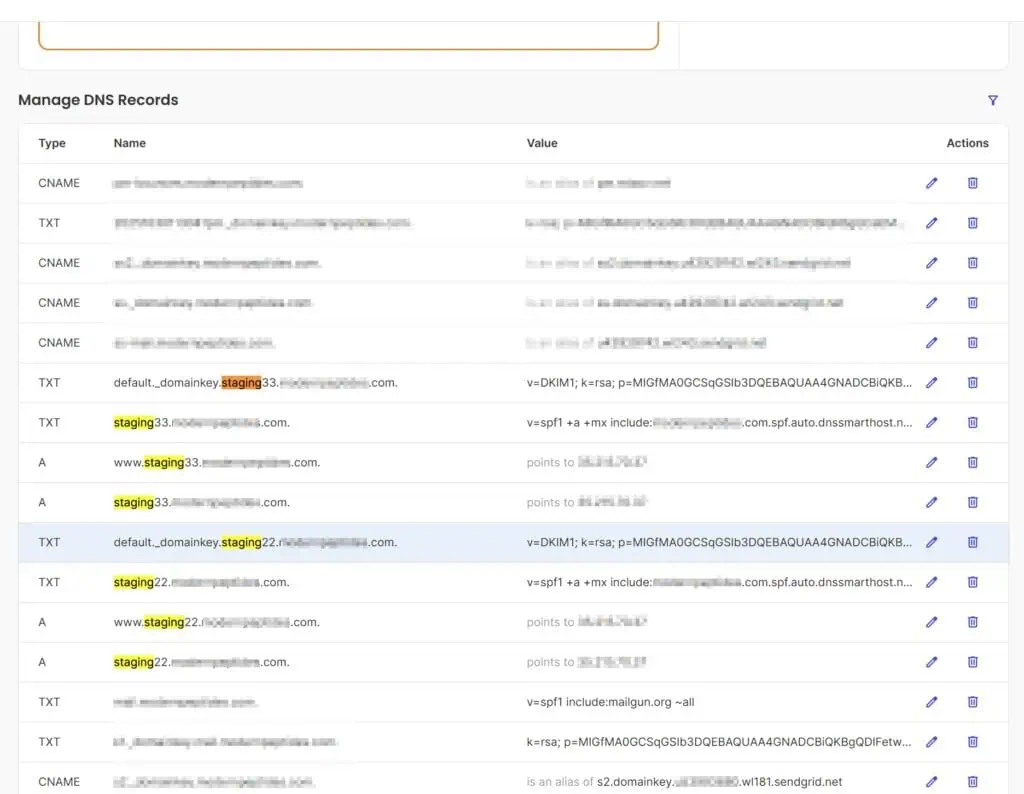
The third problem is that the same thing happens with the file system. They remove all the core WordPress files, but they still leave log files and other unnecessary clutter behind. An image is worth a thousand words:

Mediocre performance
Yes, SiteGround’s servers are nothing special; they’re actually rather slow. Feel free to take a look at this comparison between SiteGround and other hosting providers: (link not yet available)
Server limits
SiteGround’s infamous CPU and inode limits are something almost anyone who’s ever hosted a website there will have encountered. It turns out SiteGround is one of the few, if not the only hosting provider with three limits:
- Inode limit: 1 file or folder = 1 inode. This means you might not be able to upload any more files even if you haven’t reached your disk space limit. In other words, the disk space limit for each plan, which isn’t very high to begin with, has restrictions.
- Execution limit: An execution is counted each time someone or something opens your PHP-based website (like WordPress). This includes the spam that all websites inevitably receive.
- CPU usage limit (seconds per hour, per day, and per month): This is a metric used to control your website’s CPU resource consumption.
The problem with these limits is that they are very low. For example, only migrating a website to their servers with a backup plugin like WPvivid and checking the performance through WebPageTest already sets off the alarms, as you can see in our real example:
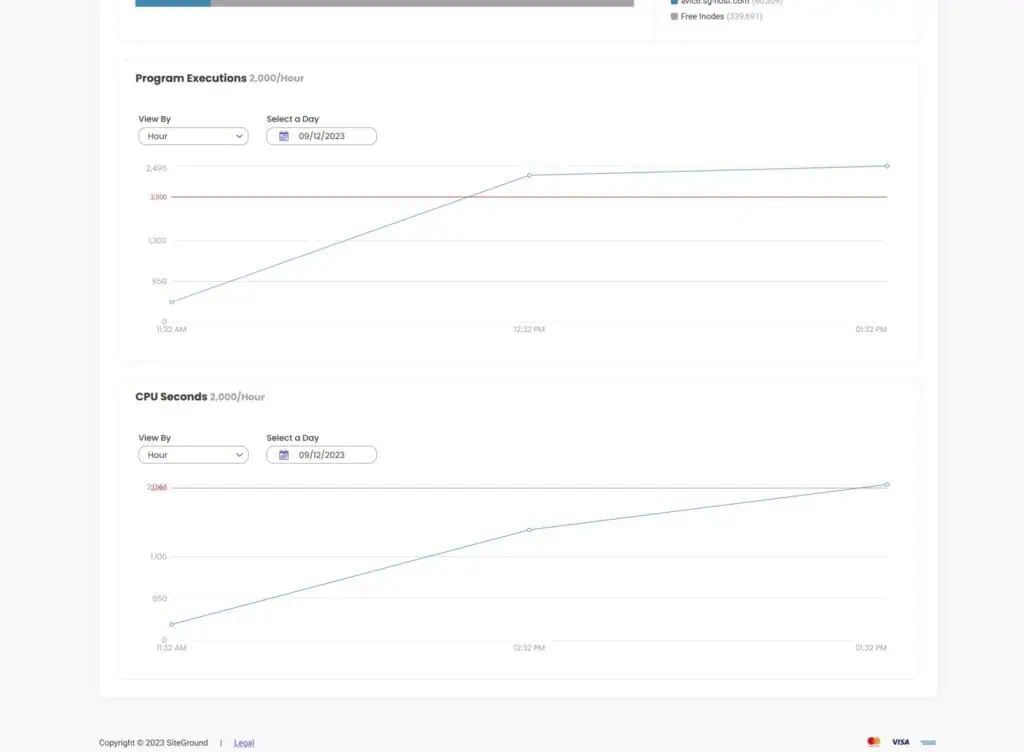
And as we’ve already mentioned, this happened only when restoring from a backup. People creating their websites with Elementor, Divi, and other resource-intensive page builders will reach the limits much faster.
And what happens when the limits are reached? They send you an email, and sometimes they might even temporarily block your access to the website. And obviously, they’ll kindly suggest you to pay for a more expensive plan with higher limits, but any reasonably professional website will eventually reach them anyway.
And it’s not just us; many other people in Facebook groups are complaining too, as Tom from Online Media Masters shows us again:

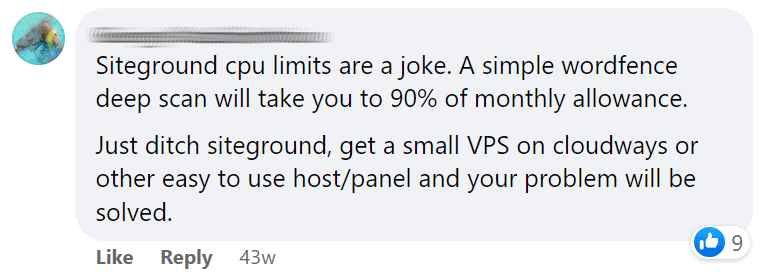


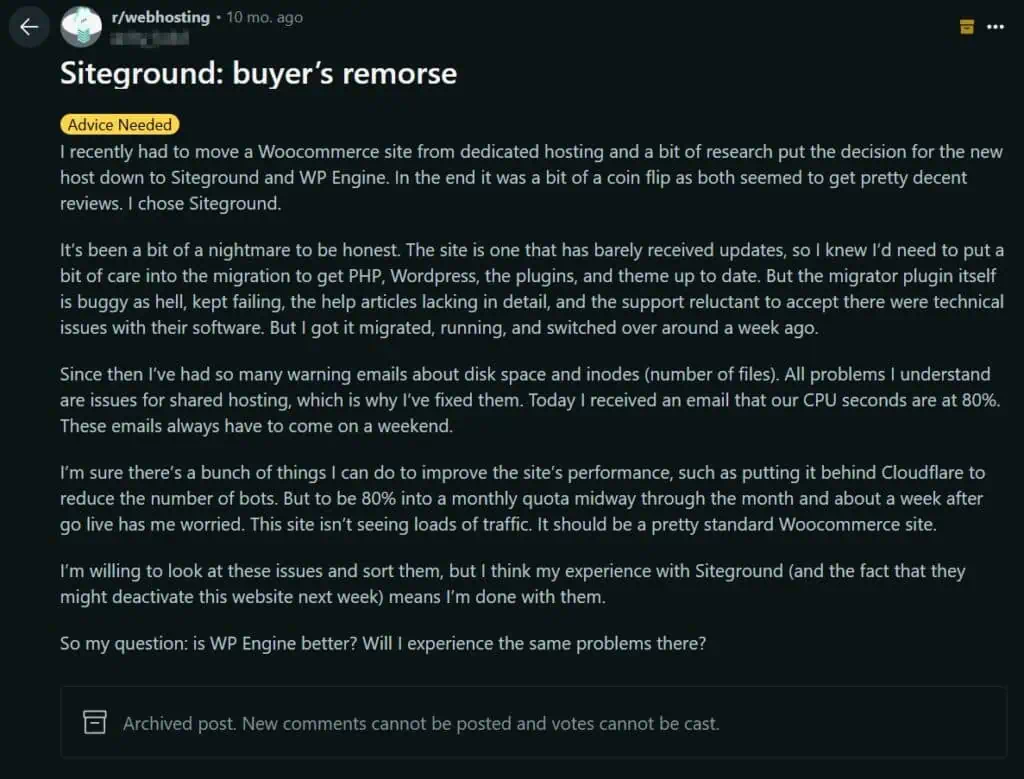
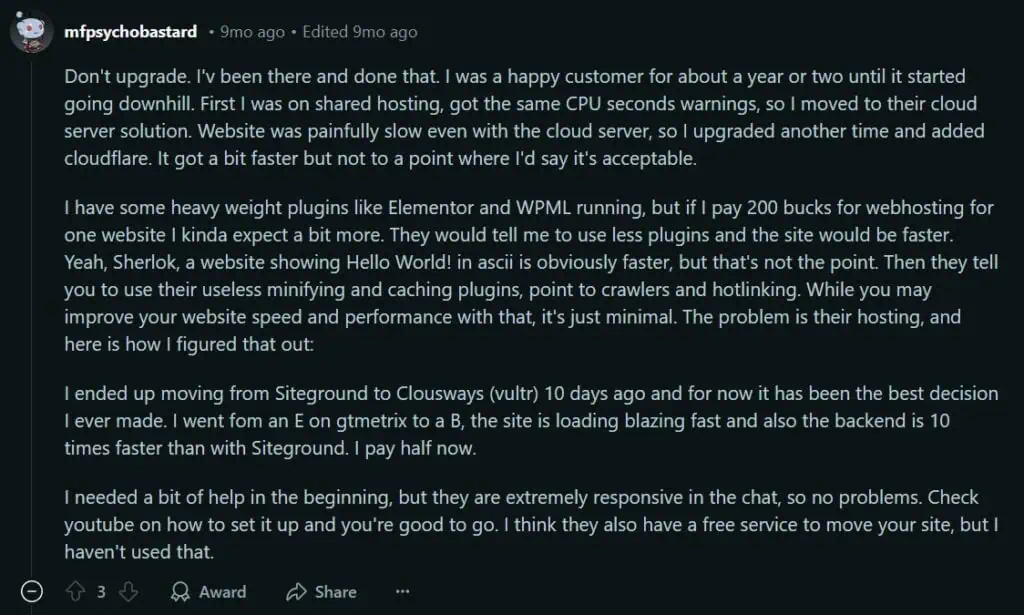
Affiliates
This section isn’t just about SiteGround, but about all hosting providers on the market. In fact, it reflects what Google has become. A simple Google search for “product/service reviews” almost always shows either ads or other blogs with their corresponding affiliate links to product/service and reviews along the lines of “this is great because it’s so fast.”
These days, you can’t tell if a hosting provider is good or bad just by looking at Google. It’s hard to find honest opinions and reviews. You have to know how and what to search, and to find out which are the best hosting providers or real SiteGround reviews, the best sites are:
- The Facebook group WP Speed Matters
- The Facebook group WPJohnny.com – WordPress Tips & Tricks
- The Web Hosting Talk forum
WordPress recommendation and more sponsorships
Until very recently, SiteGround, along with Bluehost and Dreamhost, appeared in the WordPress recommended hosting section. There’s little transparency about what it takes to appear on the WordPress recommended hosting page, but it’s speculated that SiteGround, along with the other companies listed there, were simply paying large sums of money to be featured.
In addition, SiteGround sponsors many events and WordCamps, spending money to have their name displayed and bringing in speakers to talk about various WordPress topics. WordCamps are great, and investing money in them is too (kudos to SiteGround). But at WordCamps where SiteGround is a sponsor, you won’t hear bad things about them, we assure you. Just like a soccer team won’t speak ill of the sponsor whose logo appears on their jersey and pays them. It’s important to keep in mind that marketing is one thing, and real results are another.
In our experience, the smaller the hosting company, the better the performance it will offer; the larger it is, the more you’ll hear about it but the worse the results it will deliver. Examples include SiteGround, Bluehost, Hostinger, HostGator, GoDaddy, IONOS, etc.
More true honest reviews
Do you want more? Other fellow bloggers have also experienced similar situations.
- Scattering Clouds: Affiliate links might cost you more in the long run.
- Online Media Masters: SiteGround Cloud Hosting Review: 503 Errors Up The Wazoo From Low Disk I/O Throttling (Leads To Constant Upgrades)
What alternative do you recommend?
If you’ve decided SiteGround isn’t what you’re looking for, we recommend you take a look at the options we suggest in our guide on how to optimize WordPress. For us, honesty comes first, and we never recommend anything that isn’t genuinely good and that we haven’t personally tested. In fact, in the past, when SiteGround was still a good option, we recommended it! But things have changed…
And if you also want to save money, we suggest you set up your own VPS quickly and cheaply.



